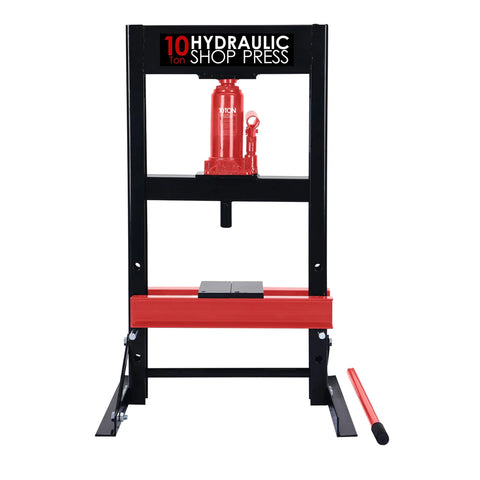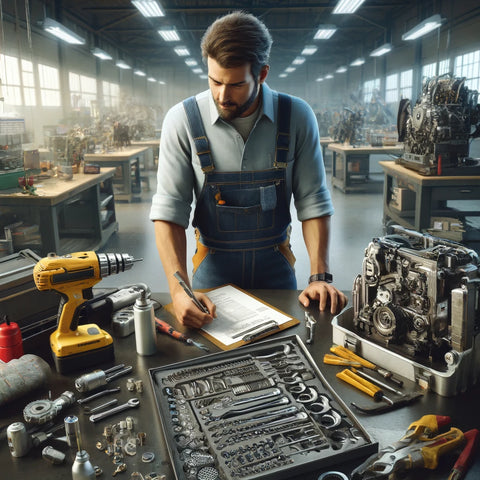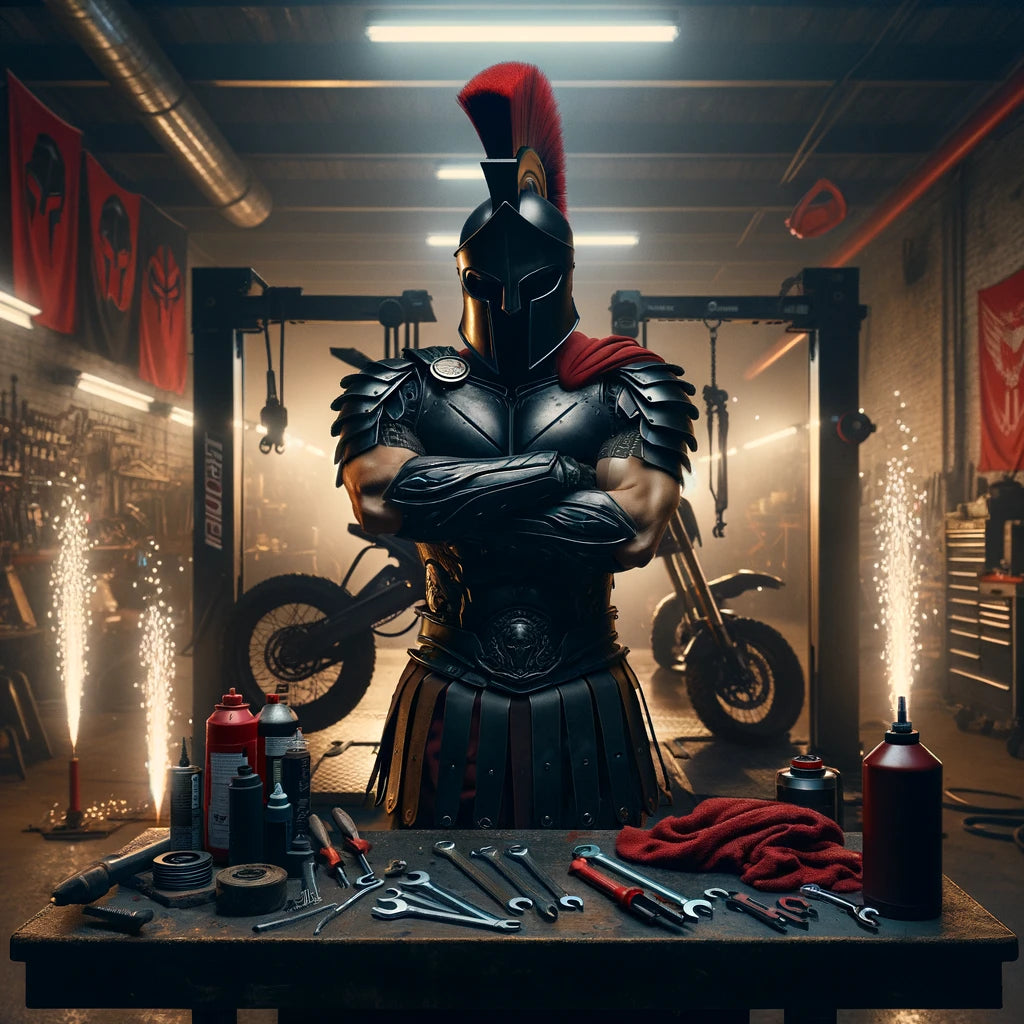In any workshop, the shop press is a cornerstone tool, essential for precision tasks like reshaping, forming, and pressing parts. Understanding how to effectively utilize a shop press not only boosts the quality of your projects but also streamlines your workflow.
This article helps beginners and experienced craftsmen choose the right shop press, operate it safely, and solve common issues quickly. Let's delves into essential tips for making informed purchasing decisions, outlines key safety measures to prevent workplace accidents, and provides practical solutions for typical shop press challenges.
How to Select the Ideal Shop Press for Your Workshop Needs
The key to making a wise investment lies in understanding the different types of shop presses available, their features, and how these align with your specific project needs. This section will guide you through the essential considerations to help you select the perfect shop press, ensuring you get the best value and performance for your workshop.
1. Choosing the Right Type

- Hydraulic vs. Manual Shop Presses: Hydraulic shop presses offer powerful, consistent pressing force with minimal effort, ideal for heavy-duty tasks and frequent use. Manual presses, on the other hand, require more physical effort but provide greater control and precision for smaller projects. Understanding the nature of your projects will help you decide which type suits your needs.
- Benchtop vs. Floor Models: Consider the space you have available in your workshop. Benchtop models are great for smaller spaces and lighter tasks, while floor models offer more power and capacity for larger projects.
2. Key Features to Consider
- Lifting Capacity: The press's capacity, usually measured in tons, is crucial. Assess the heaviest item you plan to work with and choose a press with a capacity that exceeds this weight to ensure versatility for future projects.
- Size and Workspace Requirements: The physical dimensions of the shop press and its work area should accommodate the materials and parts you intend to work with, without overcrowding your workshop.
- Additional Features: Look for features that add value to your work, such as pressure gauges for precision, adjustable workbeds to accommodate different project sizes, and built-in safety mechanisms.
3. Budget Considerations
When planning your shop press purchase, it's crucial to view this as a long-term investment in your workshop's capabilities and efficiency. Here are some key points to keep in mind:
- Invest Wisely: Higher upfront costs can often translate to better quality, durability, and safety features. Consider how a shop press fits into your long-term workshop plans.
- Cost vs. Capacity: Balance your budget with the press's lifting capacity. While it might be tempting to save money by choosing a press with lower capacity, ensure it can handle the majority of tasks you envision for it.
- Consider Operational Costs: If opting for a hydraulic press, factor in any additional costs such as hydraulic oil replacements or electric usage, if applicable.
- Maintenance and Repairs: Acknowledge potential maintenance or repair costs. A cheaper model might incur higher long-term costs if it's prone to breakdowns or requires frequent part replacements.
By carefully considering these aspects, you'll be well-equipped to choose a shop press that meets your needs, fits your workspace, and serves you well for years to come. Remember, the right shop press is not just a purchase; it's an investment in your project's quality and efficiency.
Protocols for Accident-Free Operations

Operating a shop press safely is paramount to preventing accidents and ensuring a secure working environment. This section outlines crucial safety protocols and best practices to follow. By adhering to these safety measures, you can minimize risks and protect yourself and others in the workshop.
1. Personal Protective Equipment (PPE)
- Essential Gear: Wear appropriate PPE at all times when operating the shop press. This includes safety goggles to protect your eyes from flying debris, durable gloves to safeguard your hands, and steel-toed boots to protect your feet.
- Regular Inspection and Replacement: Ensure your PPE is in good condition and replace any items that show signs of wear or damage.
2. Operating Procedures
- Comprehensive Training: Before using a shop press, undergo thorough training or review the manufacturer’s guidelines to understand the operation fully.
- Load Limits: Always respect the shop press’s rated capacity. Attempting to press items beyond the specified limit can result in equipment failure or personal injury.
- Secure Workspace: Keep the area around the shop press clean and free of obstructions. Ensure adequate lighting and stable flooring to prevent accidents.
3. Emergency Protocols
- Emergency Stop: Familiarize yourself with the shop press's emergency stop feature, if available. Knowing how to quickly shut down the machine can prevent accidents.
- First Aid: Maintain a first-aid kit nearby and be knowledgeable about basic first aid procedures in case of an accident.
- Reporting and Investigation: In the event of an incident, report it immediately and conduct a thorough investigation to prevent future occurrences.
4. Regular Maintenance Checks
- Pre-Use Inspection: Before each use, inspect the shop press for any signs of wear, damage, or leaks. Check all moving parts to ensure they operate smoothly.
- Scheduled Maintenance: Adhere to a regular maintenance schedule as recommended by the manufacturer to keep the shop press in optimal condition.
By prioritizing safety and incorporating these protocols into your daily operations, you ensure that your shop press remains a valuable and safe asset in your workshop. Remember, a safe workshop is a productive workshop.
Quick-Fix Solutions for Shop Press Dilemmas

Even with meticulous care and regular maintenance, shop presses can encounter problems that hinder their operation. This section addresses common issues you may face and provides practical advice on troubleshooting and resolving them quickly, minimizing downtime in your projects.
1. Identifying Common Problems
- Hydraulic Fluid Leaks: One of the most frequent issues with hydraulic shop presses is fluid leakage, which can lead to a loss of pressure and decreased performance.
- Unresponsive or Sticking Ram: A ram that won't move or gets stuck during operation can be caused by air trapped in the hydraulic system or mechanical obstructions.
- Inconsistent Pressing Force: If the pressing force becomes inconsistent, it could be due to issues with the hydraulic system, such as low fluid levels or worn-out seals.
2. Practical Solutions
- Fixing Hydraulic Fluid Leaks: Check all hydraulic connections and seals for leaks. Tighten any loose connections and replace damaged seals to restore proper function.
- Releasing a Stuck Ram: To address a stuck or unresponsive ram, first check for and remove any physical obstructions. Then, bleed the hydraulic system to remove trapped air, following the manufacturer's instructions.
- Restoring Consistent Pressing Force: Ensure the hydraulic fluid is at the recommended level and refill if necessary. If the problem persists, inspect the system for worn parts that may need replacing.
3. Maintenance Tips
- Regular Hydraulic System Checks: Keep an eye on the hydraulic fluid level and quality. Change the fluid at intervals recommended by the manufacturer to prevent contamination-related issues.
- Keep It Clean: Regularly clean the shop press, focusing on the ram and work area, to prevent dirt and debris from causing mechanical jams or hydraulic blockages.
- Routine Inspections: Conduct thorough inspections of the shop press for signs of wear or damage, particularly to the hydraulic hoses, seals, and ram. Early detection of potential problems can prevent more serious issues down the line.
Troubleshooting and maintaining your shop press doesn't have to be a daunting task. By familiarizing yourself with these common problems and their solutions, you can ensure that your shop press continues to operate smoothly, supporting your projects with reliability and precision.
This article has equipped you with the knowledge to make informed decisions, operate your equipment safely, and solve common operational issues effectively. This foundation is crucial for anyone looking to enhance their workshop capabilities and ensure the longevity of their shop press. These principles are your gateway to maximizing efficiency and achieving superior results in all your endeavors.
Discover the perfect match for your workshop's unique requirements by exploring our diverse selection of shop presses. With the right tools at your disposal, there's no limit to what you can create, repair, or innovate. Whether you're pressing bearings, forming metal, or undertaking any number of tasks that benefit from a shop press, your mastery of this tool will significantly contribute to the quality and efficiency of your work.

